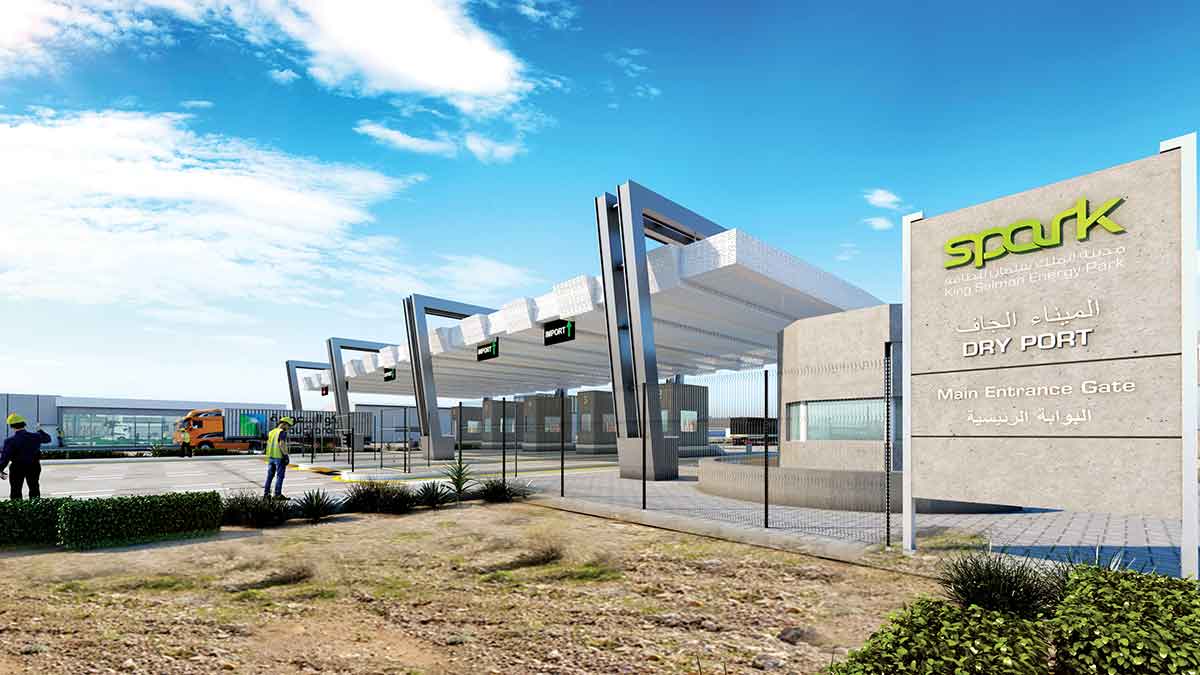SPARK Developing
SPARK Dry Port: Helping realize Vision 2030

January 13, 2021
Project management team drives development of world-class dry port and logistics zone.
The King Salman Energy Park (SPARK) Project Management Team (PMT) continues to make strides in the realization of Saudi Vision 2030 with the development of a world-class dry port and logistics zone.
The dry port, which sits between Dammam and al-Hasa, will serve both SPARK industries and the wider Eastern Province. The port is also intended to attract and expand private sector participation in the economy, and directly support Aramco’s objectives at SPARK.
Murad A. Sayed, general manager of Maritime, Building and Infrastructure Management, said, “This first-class system of the SPARK dry port will deliver significant improvements to the Saudi Customs’ services not only in SPARK, but also to all areas served by the Customs’ authority.”
The dry port is also a key enabler for the development of the wider SPARK site, as it will directly leverage the benefits of the Gulf railway, which will connect all six Gulf Cooperation Council member states on the Arabian Gulf to provide new freight transport options and Customs facilities.
To meet the projected demand at SPARK, the dry port will be developed in two phases. The first one being the implementation of facilities to operate the port using truck haulage, and the second phase, which would be served when the railway is operational.
The primary objective for the dry port is to support the logistics needs of the SPARK industrial city, and surrounding industrial centers.
The dry port and logistics zone within the complex furthers the development and promotion of private sector investment in the eastern part of the Kingdom. This will provide significant benefits to future tenants in SPARK, enabling them to access international markets in an efficient way, in part by leveraging on-site Customs with more feasible transport links.
The dry port design implements an Inbound Screening Facility (ISF) for Saudi Customs that helps to reduce the buildup area by 37% and increase port efficiency, resulting in construction cost savings and a shorter completion schedule.
This ISF facility will be installed in the dry port entrance and features sensors and scanners to screen incoming cargo as it passes through the gate. This helps Customs decide in advance to either release the cargo or transfer it for manual inspection. The ISF includes a radiation portal monitor, an over height detection system, a weigh in motion, a truck photo camera, a license plate reader, an X-ray source portal, and a RFID reader.
The dry port’s automation, latest technology, and Customs’ clearance procedures are based on the best international practices of risk management and will be utilized for the first time in the Kingdom, reducing manual inspection rates from 80% to 20%, enabling more cargo to be handled and reducing the footprint of the Customs area and its required resources.
This dry port and logistics zone project is evidence that PMT at SPARK is continuously seeking excellence to bring benefits to the project and to the Kingdom.



